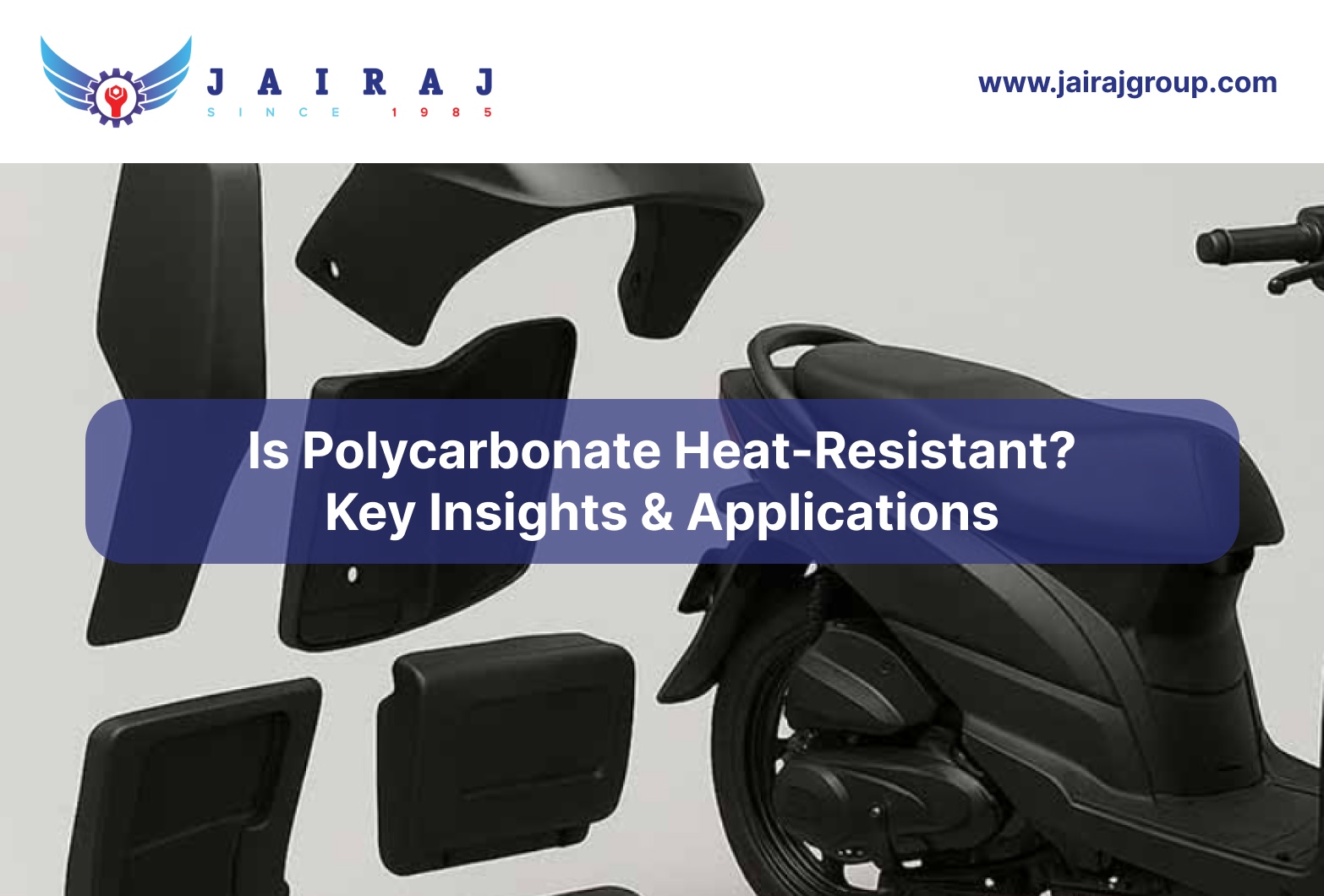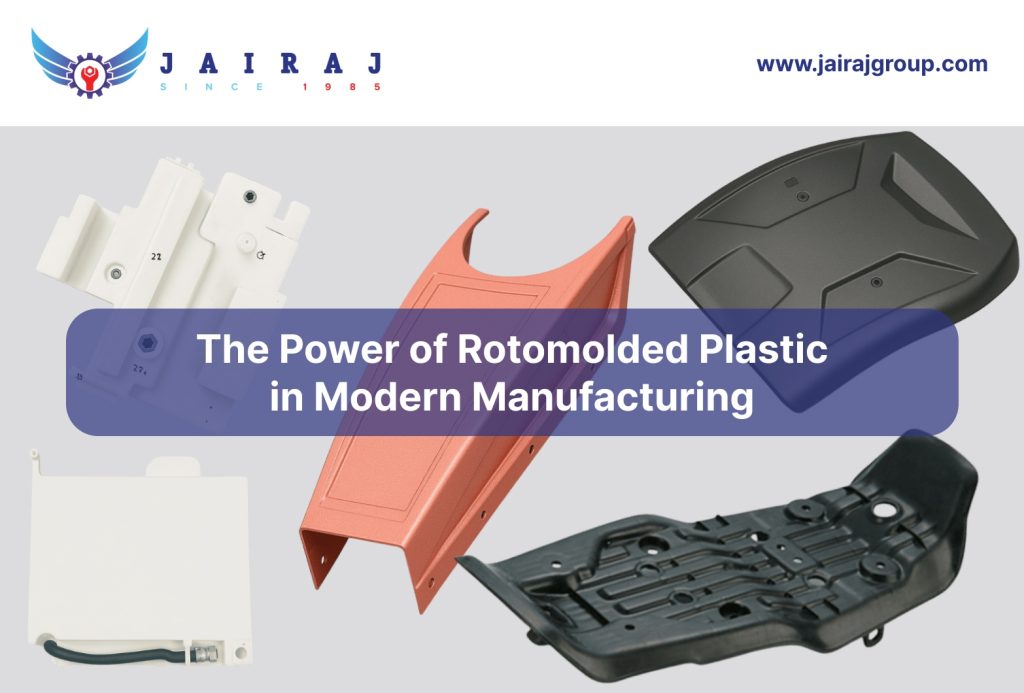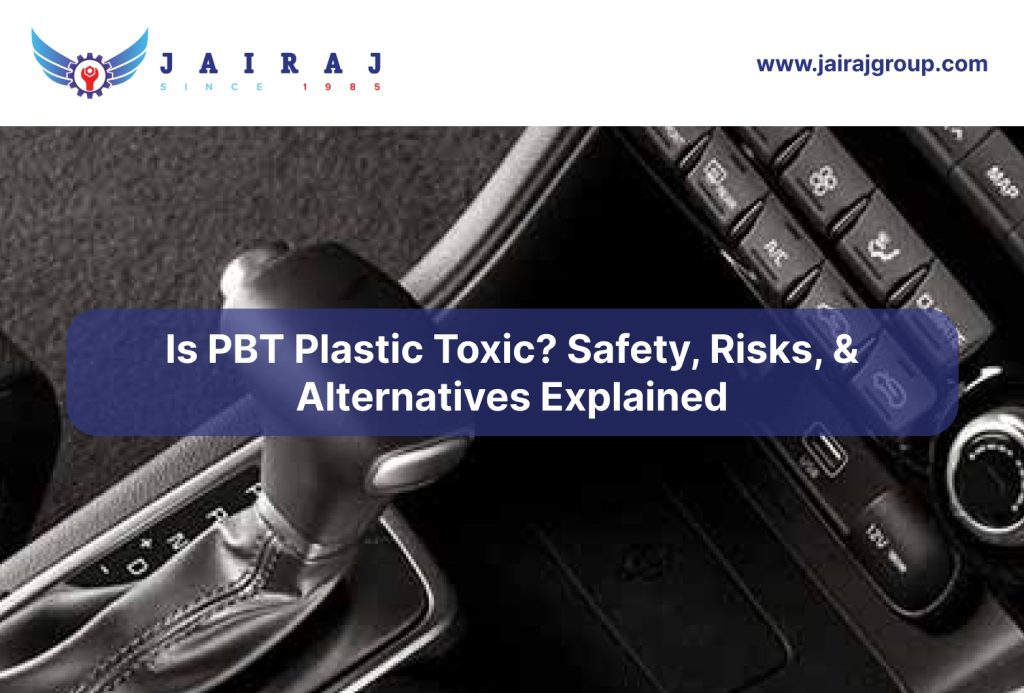Think of a material that combines strength, clarity, and heat resistance, all in one. That’s polycarbonate. It’s a highly versatile material used across industries such as automotive, aerospace, and heavy equipment. The global market for polycarbonate is expected to reach USD 24.31 billion by 2032, showing its growing importance across sectors.
Polycarbonate plays a key role in automotive, aerospace, and heavy equipment applications, where both strength and reliability matter. Its ability to handle heat often determines how well it performs in demanding, high-stress environments.
As OEMs and Tier-1 suppliers face growing pressure to meet strict safety and performance standards, understanding how polycarbonate reacts to heat is more important than ever.
In this blog, you’ll explore how polycarbonate performs under heat, its uses, and the limits manufacturers should consider to get the best out of this durable material.
Key Takeaways:
- Polycarbonate has strong heat resistance, with a Heat Deflection Temperature (HDT) of 130°C to 140°C, making it suitable for moderate heat uses like automotive and aerospace parts.
- It keeps its impact strength even at high temperatures, ensuring dependable performance in demanding conditions with both heat and stress.
- Its durability and long lifespan help lower maintenance and replacement costs, offering better long-term value for OEMs and Tier-1 suppliers.
- Instead of melting suddenly, polycarbonate softens gradually, giving more molding flexibility but needing careful temperature control to prevent warping.
- For extreme heat conditions, it can be enhanced with flame-retardant additives or UV coatings for added safety and strength.
A Quick Look at Polycarbonate’s Heat Resistance
Polycarbonate is one of the most trusted materials in high-performance manufacturing, known for its excellent heat resistance. To get the best performance from polycarbonate, it’s important to understand how it behaves under heat and where it performs best.
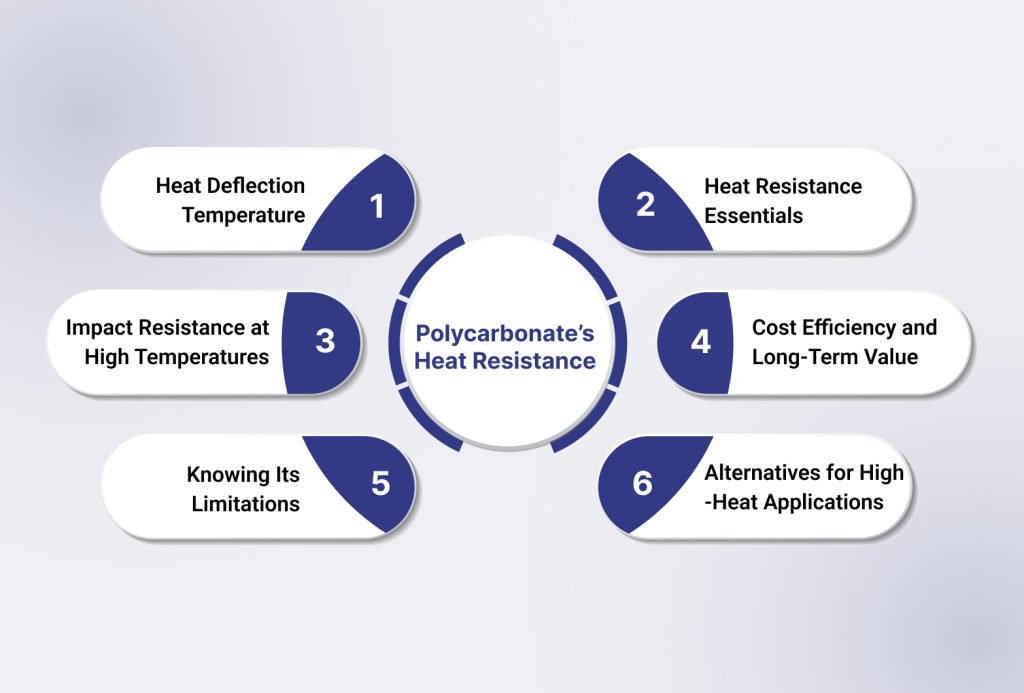
Heat Deflection Temperature and Its Role
Polycarbonate’s Heat Deflection Temperature (HDT) shows how well it maintains its shape when exposed to heat. This property is essential for designing components that can handle high operating temperatures without losing their form or function.
- HDT Range: Typically, polycarbonate has an HDT of around 130°C to 140°C (266°F to 284°F). It performs well under moderate heat, but long-term exposure beyond this range can cause softening or deformation.
- Impact on Components: Parts such as lighting housings, instrument panels, or engine enclosures must be carefully designed to remain within the HDT limit. Doing so helps prevent warping or performance issues under sustained heat.
Polycarbonate’s heat resistance is critical for automotive components like brake and accelerator pedals, ensuring they perform reliably even under high-temperature conditions.
Daily Uses Where Heat Resistance Counts
Polycarbonate’s thermal stability plays a major role in applications where heat is a daily challenge. Its balance of strength and heat resistance helps create reliable, long-lasting parts.
- Automotive: Used in dashboards, headlamp lenses, and bumpers; areas exposed to engine heat and direct sunlight. Its ability to handle heat without cracking ensures better durability and performance.
- Aerospace: Ideal for cockpit windows and instrument panels that must maintain strength and clarity under changing temperatures and air pressure.
- Heavy-Duty Machinery: Commonly used in machine covers and enclosures where parts face continuous heat. Polycarbonate ensures dependable performance even in tough, high-temperature industrial conditions.
In two- and three-wheelers, polycarbonate’s heat resistance keeps the seating bases strong and reliable. It performs well even under high temperatures from engine heat and the surrounding environment.
Impact Resistance at High Temperatures
What makes polycarbonate even more impressive is that it doesn’t lose its toughness when things heat up. It maintains its impact strength and flexibility, even under demanding conditions where heat and mechanical stress coexist.
- Heat and Impact Durability: Polycarbonate retains its tensile and impact strength at higher temperatures, keeping components reliable in harsh operating environments.
- Long-Term Reliability: Its ability to withstand both heat and impact reduces the risk of part failure, making it a dependable material for critical automotive and aerospace components.
Shockers and suspension components are often exposed to heat during operation. Polycarbonate’s heat resistance helps these parts stay durable even in demanding environments.
Cost Efficiency and Long-Term Value
Polycarbonate’s heat resistance improves performance and saves money over time. Because it can handle heat without degrading quickly, it reduces maintenance and replacement needs.
- Maintenance Reduction: Fewer part replacements mean lower maintenance costs and less downtime for manufacturers.
- Total Cost of Ownership (TCO): The long service life of polycarbonate parts helps OEMs achieve better long-term value and a more efficient production cycle.
Knowing Its Limitations
While polycarbonate performs exceptionally well in moderate heat environments, it does have limits. For extreme temperature applications, it’s essential to know where adjustments or alternatives are needed.
- Thermal Expansion: Polycarbonate can expand and contract with temperature changes, which may affect the fit of tight-fitting or precision parts.
- UV Degradation: Prolonged UV exposure can weaken its thermal and structural properties. To counter this, manufacturers often add UV stabilizers or coatings for outdoor use.
Alternatives for High-Heat Applications
For situations involving higher heat than polycarbonate can handle, alternative materials are worth considering. These offer added protection and performance under extreme thermal stress.
- PEEK (Polyetheretherketone): Offers excellent heat resistance for extreme environments, making it suitable for aerospace or high-performance automotive applications.
- PTFE (Polytetrafluoroethylene): Performs well at very high temperatures and is ideal for industrial settings where polycarbonate may not hold up.
To meet your high-strength, heat-resistant, and transparent component requirements, connect with JaiRaj Group for expert guidance on material selection and tooling consultation. Contact here.
Suggested Read: Polycarbonate vs ABS: Optimizing Materials for Durability and Design
Why Polycarbonate Does Not Melt Like Ordinary Plastics?
Polycarbonate (PC) is a tough, high-performance plastic that can withstand both heat and stress. But it doesn’t have a clear melting point like many other materials. That’s because of its unique internal structure, which affects how it’s made and how it performs in real-world conditions.
The Amorphous Structure of Polycarbonate
Polycarbonate is what’s known as an amorphous polymer. It means the molecules don’t line up in a regular, repeating pattern the way they do in crystalline materials. In crystalline plastics, the molecules are neatly arranged, so they melt sharply at one specific temperature.
- Gradual Softening: Polycarbonate softens slowly across a range of temperatures instead of melting suddenly. This makes it easier to mould or extrude, but also requires careful temperature control to prevent warping or deformation.
- Manufacturing Considerations: Since polycarbonate softens gradually, too much heat can cause it to lose shape. Keeping temperatures in check during production and use helps the material stay stable and perform well.
Glass Transition Temperature (Tg) vs. Melting Point
Polycarbonate’s Glass Transition Temperature (Tg) around 150°C (302°F) is the temperature at which it shifts from a hard, glass-like state to a softer, rubbery state.
- Tg vs. Melting Point: Unlike materials that melt suddenly, polycarbonate gradually loses rigidity as it approaches its glass transition temperature (Tg). At higher temperatures, it can become less stiff, so designers need to factor this in to maintain performance.
- Thermal Performance: This behavior is essential in automotive and electronic applications, where components are subject to changing temperatures. Knowing the Tg helps engineers design components that stay strong and hold their shape even when exposed to heat.
Softening Range and Processing Considerations
As polycarbonate softens rather than melts outright, it behaves differently during manufacturing.
- Injection Moulding and Extrusion: The gradual softening of polycarbonate helps it flow smoothly during moulding and extrusion. However, if the temperature isn’t properly controlled, the material can soften too much, leading to defects or shape distortion.
- Thermal Expansion: Polycarbonate expands slightly at high temperatures. Designers need to account for this to keep parts accurate and functional after assembly.
What This Means in Real-World Uses
Polycarbonate’s lack of a fixed melting point actually works in its favor for many uses. It offers a balance of flexibility, heat resistance, and impact strength that’s hard to match.
- Automotive: Polycarbonate is commonly used in headlamp lenses, dashboards, and lighting housings, parts that face engine heat and direct sunlight. Its gradual softening keeps it from becoming brittle while ensuring long-lasting durability.
- Aerospace and Electronics: In these industries, polycarbonate is used for cockpit windows, instrument panels, and battery casings. It handles temperature changes without cracking or warping, making it a reliable choice for high-performance components.
Knowing why polycarbonate lacks a single melting point gives better context for understanding how it behaves under heat, especially when it comes to fire resistance.
Also Read: Top 8 Heat-Resistant Plastics Used Across Industries
How Well Do Polycarbonate Sheets Resist Fire?
One of the key strengths of polycarbonate sheets is their fire resistance. While they aren’t completely fireproof, they perform much better than most other plastics when exposed to flames.
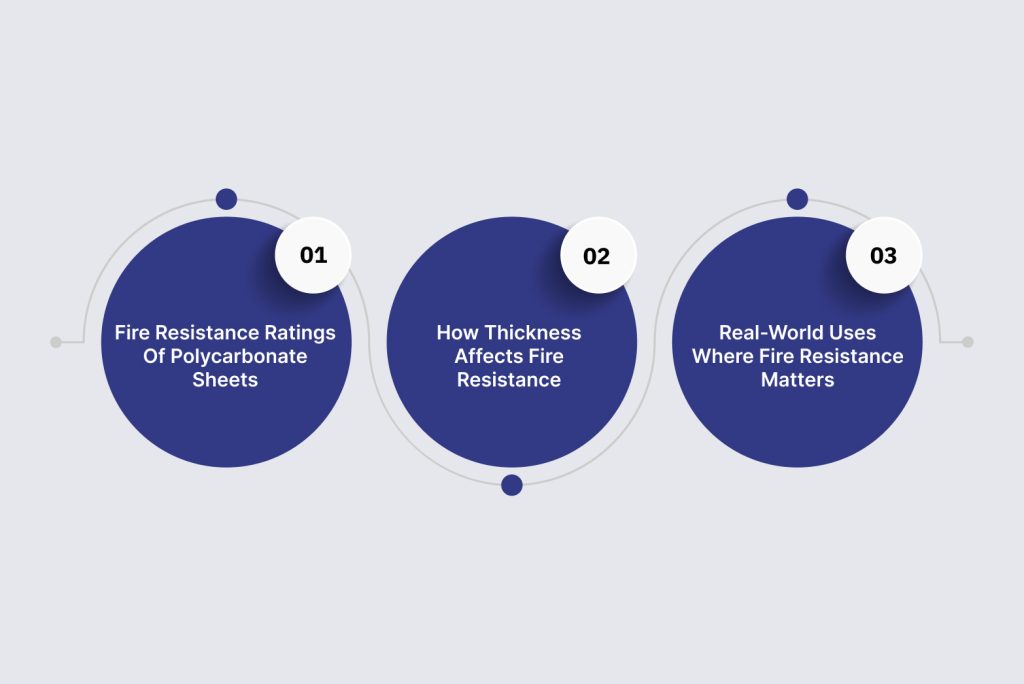
This makes them a top choice in industries that need to meet strict safety standards without compromising performance.
Fire Resistance Ratings of Polycarbonate Sheets
Polycarbonate sheets are tested under the UL 94 flammability standard, which measures how materials behave when exposed to fire. Depending on their composition and thickness, these sheets can earn different ratings, such as V-2 or V-0.
- UL 94 V-0 Rating: Sheets with a V-0 rating stop burning within 10 seconds after the flame is removed and don’t drip molten material. This makes it ideal for building facades and electronic enclosures.
- UL 94 V-2 Rating: Sheets with a V-2 rating resist burning but may drip molten material and take longer to self-extinguish. They’re a good fit for general construction or low-risk applications where safety still matters.
How Thickness Affects Fire Resistance
The thickness of a polycarbonate sheet plays a big role in how well it resists heat and fire. Thicker sheets tend to take longer to ignite and provide better thermal protection.
- Thick Polycarbonate Sheets: Used in skylights, safety barriers, and facades, thicker sheets provide superior fire resistance and ensure better protection in case of a fire.
- Thin Polycarbonate Sheets: Commonly used for roofing and window glazing, thinner sheets still offer a decent level of fire protection but are best suited for low-risk applications.
Real-World Uses Where Fire Resistance Matters
Polycarbonate’s fire resistance is one of the main reasons it’s used across so many industries that rely on both performance and safety.
- Building & Construction: Polycarbonate is often used in skylights, roof panels, and window glazing for schools, hospitals, and commercial buildings. It lets in plenty of natural light while maintaining fire safety, especially when coated with flame-retardant finishes.
- Automotive: In cars, polycarbonate is used for headlamp covers and interior parts. Its self-extinguishing property helps reduce fire risks, adding an extra layer of safety for passengers.
- Aerospace & Electronics: In these fields, polycarbonate is used in housings, enclosures, and panels. It performs well under heat and electrical stress, keeping components strong and stable even in demanding conditions.
To ensure consistent performance and heat resistance, JaiRaj Group uses polycarbonate in automotive components like dashboards, trims, and appliance housings, applying advanced Plastic Injection Moulding and Extrusion Moulding techniques.
Limitations of Polycarbonate’s Heat Resistance
Polycarbonate (PC) is well known for its heat resistance and thermal stability. However, like any material, it has its limits. Understanding those limits helps OEMs and Tier-1 suppliers choose the right materials for parts that need to perform under high temperatures.
| Challenges | Solutions |
|---|---|
| Heat Deflection Temperature (HDT) Limitations | Use polycarbonate for moderate heat exposure (up to 140°C). For higher temperatures, combine with materials like metal or composites for added strength. |
| Long-Term Thermal Degradation | Apply UV stabilizers or use UV-resistant coatings to prevent yellowing and loss of impact strength. |
| Thermal Expansion and Dimensional Instability | Use low-CTE polycarbonate and account for thermal expansion in precision applications. |
| UV Degradation in Outdoor Applications | Choose UV-stabilized polycarbonate or apply protective UV coatings for outdoor use. |
| Limited Performance at Extremely High Temperatures | For temperatures above 150°C, opt for high-performance materials like PEEK or PTFE. |
| Fire Resistance Limitations | Use flame-retardant additives to improve fire safety, or switch to metal or ceramic for critical fire-resistant applications. |
Must Read: How to Choose the Right Plastic Product Supplier for Automotive & Industrial Components
Selecting the Right Heat-Resistant Plastic Materials with JaiRaj Group
Choosing the right heat-resistant plastic is crucial for designing automotive parts that can handle high temperatures. At JaiRaj Group, we create precision-engineered plastic solutions that meet the heat resistance, durability, and performance needs of the automotive, mobility, EV, and heavy equipment industries.
With advanced manufacturing facilities in Faridabad, Rudrapur, Aurangabad, Manesar, and Sanand, we deliver high-performance components that stand up to the thermal challenges of modern automotive manufacturing.
Why choose Jairaj Group?
- Precision Components from Advanced Polymers: We use high-performance materials such as polycarbonate and PEEK to create parts that withstand extreme temperatures while maintaining thermal stability and long-term reliability in both automotive and aerospace applications.
- Braking System Components: Our polycarbonate-based, injection-molded components offer excellent heat resistance, ensuring safe, reliable performance even under high-stress, high-temperature conditions.
- Roto-Moulded Components: Through rotational molding, we produce durable, heat-resistant parts, such as tanks and protective enclosures, ideal for vehicles and equipment operating in harsh environments.
- Advanced Materials Like TPE, TPU, and Nylon: These materials combine heat and chemical resistance with strength, making them ideal for components like fuel line connectors, dust covers, and other critical automotive parts.
Partner with JaiRaj Group to find the right heat-resistant materials for your automotive manufacturing needs. With over 35 years of experience, we continue to deliver reliable, durable, and efficient solutions that keep automotive and heavy equipment manufacturing moving forward.
Final Thoughts
Polycarbonate is a tough, heat-resistant material that performs well in moderate temperature conditions, with a Heat Deflection Temperature (HDT) of about 130°C to 140°C. It retains its impact strength even when exposed to heat, making it a trusted choice for applications in automotive, aerospace, and heavy equipment.
While it offers excellent durability and cost savings, polycarbonate does have its limits, especially when subjected to extreme heat over long periods. At JaiRaj Group, we create precision-engineered plastic solutions using advanced injection and extrusion molding technologies.
Our products, such as brake system components and high-performance polymers made from polycarbonate and PEEK, are built to perform reliably in high-temperature, demanding environments across the automotive, aerospace, and heavy equipment industries.
Reach out to JaiRaj Group for heat-resistant plastic components that offer lasting durability and consistent performance for your automotive and industrial applications.
FAQs
1. Can polycarbonate handle continuous high temperatures?
Polycarbonate can withstand heat up to about 130°C to 140°C (266°F to 284°F). But if it’s exposed to temperatures higher than that for long periods, it can start to soften or lose shape. For applications that regularly face high heat, materials like PEEK or PTFE are usually a better choice.
2. How does polycarbonate perform in very cold temperatures?
Polycarbonate stays tough even when it’s cold, which makes it great for outdoor use. However, in extremely low temperatures, it can become slightly brittle, which might reduce its impact strength.
3. Can polycarbonate be used for high-temperature parts in vehicles?
Yes, it’s quite common in cars, especially for parts like headlamp covers, dashboards, and interior trims. The key is to make sure these parts don’t go beyond polycarbonate’s heat deflection limits, so they don’t lose their shape or strength over time.
4. Does polycarbonate lose its clarity when exposed to heat?
Over time, yes. Long-term exposure to heat can make polycarbonate yellow or less clear, especially if it’s also exposed to sunlight. That’s why UV stabilizers or special coatings are often added to protect their transparency, particularly in products like skylights and windows.
5. How does polycarbonate compare to acrylic when it comes to heat resistance?
Polycarbonate can handle higher temperatures and impacts better than acrylic. However, acrylic stays clearer for longer and resists UV damage more effectively, which is why it’s often chosen for outdoor applications where clarity is important.

